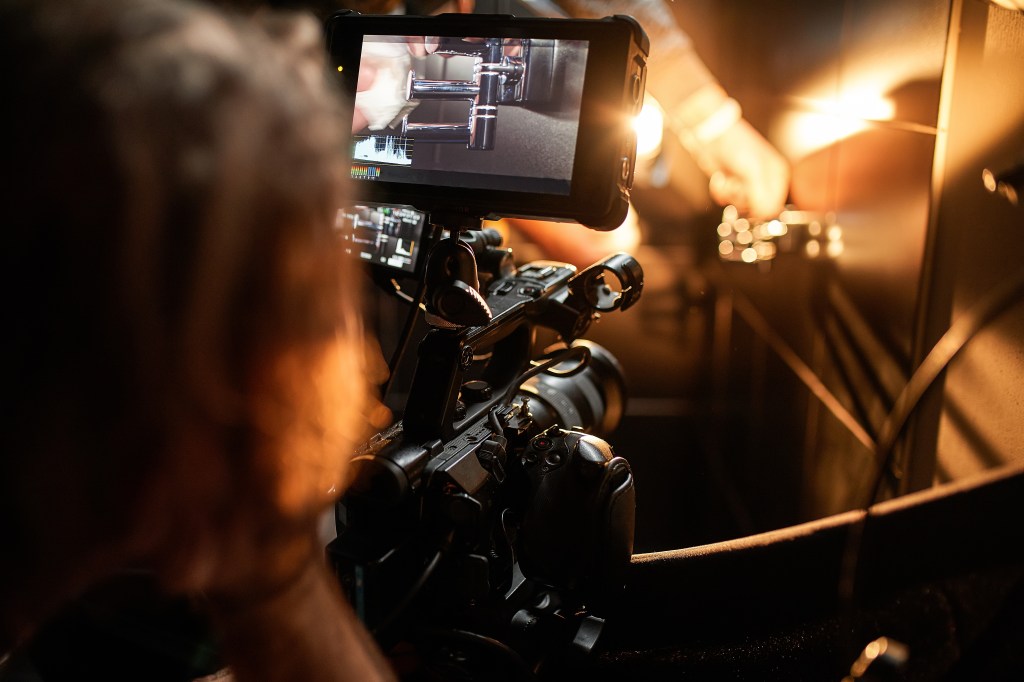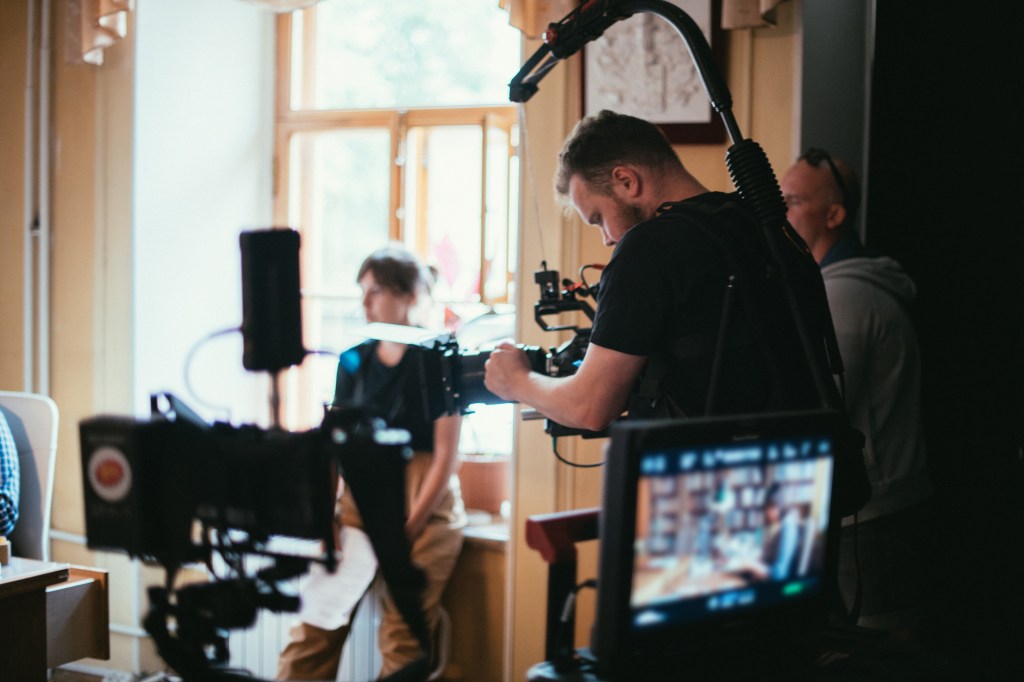Exploring the Best Movie Locations in Vacant Buildings: A How-To Guide

When it comes to finding the perfect movie location, few things excite a production crew more. Within the film industry, filming in vacant properties offers a rare creative freedom, an opportunity to transform a forgotten warehouse into a gritty crime scene or a derelict hotel into a post-apocalyptic haven, perfectly suited for filming movies across genres.
With fewer logistical hurdles and ample room for set customization, film production in empty buildings gives every production company the flexibility to dream big and shoot bold.
These film-friendly property features, like open floor plans, minimal tenant disruption, and full creative control, make vacant spaces the ultimate cinematic playground for today’s demanding productions.
How to List Your Vacant Property for Film Projects
Turn vacant space into a filming opportunity
If you own a vacant property with cinematic potential, turning it into a welcoming filming location can transform an idle space into a steady income stream. Renting your building for film productions is not only a smart business move but also a unique way to be part of the movie-making process.
This not only makes it more attractive to production teams but also offers a rewarding way to participate in the world of movie magic.
Use platforms and location agencies to get noticed
Leading platforms like Peerspace and Lavish Locations offer intuitive listing tools and wide exposure to location managers, scouts, and production company professionals searching for unique backdrops.
Partnering with specialized location agencies can further streamline the process, providing valuable industry connections and hands-on support, ideal for those looking to earn income from location rentals without the guesswork.

Make your property stand out to location scouts
To maximize your property’s appeal and increase the likelihood of being selected for filming days, follow proven film location rental tips: highlight architectural character, spatial flexibility, and cinematic features such as exposed brick, dramatic staircases, or atmospheric lighting. Pair vivid, engaging descriptions with high-resolution images to ignite visual inspiration.
A well-crafted listing not only boosts your property’s visibility but also makes it more appealing to a film crew, enhancing its chances of being chosen for film or television productions.
Legal Requirements: Permits, Contracts, and Permissions
Filming on private property involves more than just creative vision; it demands a solid understanding of the legal and financial requirements for film shoots. Property owners and production teams must secure the appropriate shooting permits for private property from local municipalities, particularly when productions involve special effects, large crews, or impact public access.
Just as essential are location contracts for filming, which clearly define the terms of use, production dates, price ranges, rental fees, and each party’s responsibilities.
These agreements should also address liability coverage and insurance provisions to protect both property and personnel.

In some cases, consent may also be required from tenants or neighboring property owners to ensure full compliance. For properties that command high location fees, it’s especially important to navigate these legal elements upfront. Doing so not only safeguards everyone involved but also sets the stage for a smooth, interruption-free shoot.
For productions on tighter budgets, there are also creative ways to negotiate terms or offer added value, making even premium locations more accessible.
Preparing a Vacant Property for a Film Shoot
Preparing a vacant property for a film shoot doesn’t require a major overhaul, just a well-executed strategy guided by a solid film-ready property checklist. Knowing how to prep a building for filming starts with the basics: thorough cleaning and decluttering to present a neutral, adaptable space. Structural safety is non-negotiable; clear walkways, secure fixtures, and hazard-free access are essential for protecting cast and crew.

Attention to filming logistics is key. Filmmakers often need reliable electricity, water access, and climate control to keep productions running smoothly, especially on longer feature film shoots. If you’re using vacant buildings as film sets, consider enhancing appeal with simple, cost-effective touches like operable lighting, versatile open areas, or visually interesting architectural features.
These elements can help your property stand out to location scouts looking for the perfect backdrop. The goal is to deliver a safe, functional blank canvas that inspires creativity, without inflating your prep budget.
What Production Teams Look for in a Filming Location
In 2025 and 2026, production teams are scouting filming locations that offer more than just aesthetic value; they’re seeking adaptable, film-ready environments that align with evolving storytelling trends and tighter production budgets.
Vacant real estate has become especially attractive for filming, offering the creative flexibility to transform an empty house or building into a compelling movie set. Industrial charm, historic architecture, and raw, gritty aesthetics remain highly desirable among filmmakers aiming for visual authenticity and atmosphere.
But beyond the look, it’s the location services and practical features that often seal the deal. Sound insulation, secure access, on-site parking, and designated areas for crew operations are critical components of a successful shoot.
Properties that support both traditional and tech-enabled productions, such as virtual or hybrid sets, stand out in a competitive market.
Highlight not only your space’s character but also its functionality and other perks, like proximity to catering, staging areas, or production offices. In today’s fast-paced production landscape, charm backed by convenience is what gets the green light.
The Financial Potential of Renting Your Home for Filming
Monetizing empty buildings for film production offers property owners a valuable opportunity to generate additional income with minimal ongoing effort. Depending on the project’s scope and the uniqueness of the setting, renting out a house or commercial space for movie shoots can bring in anywhere from $1,000 to over $4,000 per day.

While lower-budget productions like indie films may pay less, larger studio projects often offer premium rates, especially if the location plays a central role or requires exclusive access.
Most payment arrangements include an upfront deposit at contract signing, with the balance paid on or shortly after the shoot. Be sure to review the location agreement carefully, including clauses for overtime fees, property modifications, and extended usage.
Productions are typically responsible for any damages, but it’s important to document the property’s condition before and after filming to ensure proper reimbursement.
In some cases, hosting a production company can also benefit local businesses, as crews often rely on nearby vendors for catering, lodging, and supplies, bringing increased foot traffic to the area.
With clear legal safeguards and a streamlined rental process, your unused property can become a profitable asset, generating passive income and boosting its appeal for future bookings.
Protecting Your Property: Insurance and Liability Coverage

Secure the right insurance before filming
Before handing over the keys to your house or vacant property for a host film shoot, securing the right insurance is more than just a precaution; it’s a foundational step toward responsible and profitable hosting.
Whether you’re planning to host filming regularly or just testing the waters, especially if you have more than one home, you’ll need both vacant property filming insurance and liability coverage tailored to film locations. These policies help mitigate risks such as structural damage, injury claims, or contract disputes.
Work with specialized insurance providers
Specialized providers like Vacant Express Insurance offer coverage designed specifically for film-related activities, addressing the unique challenges of turning real estate into a movie set. The premium depends on factors like the size of the production, duration of the shoot, and the type of property being used. Since each day carries different levels of risk, especially during high-traffic shoot or wrap days, it’s important to double-check your policy details and ensure comprehensive coverage.
Document property condition for protection after filming wraps
To protect yourself financially, always provide proof of your property’s condition before and after filming, especially when film wraps, as this is when most wear and tear or damage is assessed. This documentation is key to securing proper reimbursement in case of damage.
With the right policies in place, you gain peace of mind knowing your property and financial interests are secure. This final layer of protection not only reinforces your credibility as a film-friendly host but also helps turn your space into a reliable source of extra income through future bookings.
Sources:
https://movies.stackexchange.com/questions/91527/do-establishing-shots-require-a-property-owners-permission
https://www.location-collective.co.uk/property-owner/filming-in-a-vacant-building/
https://www.latimes.com/entertainment-arts/business/story/2022-09-15/how-to-turn-your-home-into-a-filming-location
https://lavishlocations.com/guide
https://the-inbetween.ca/how-to-rent-your-home-as-a-filming-location/
https://www.peerspace.com/resources/how-to-rent-home-for-movies/

